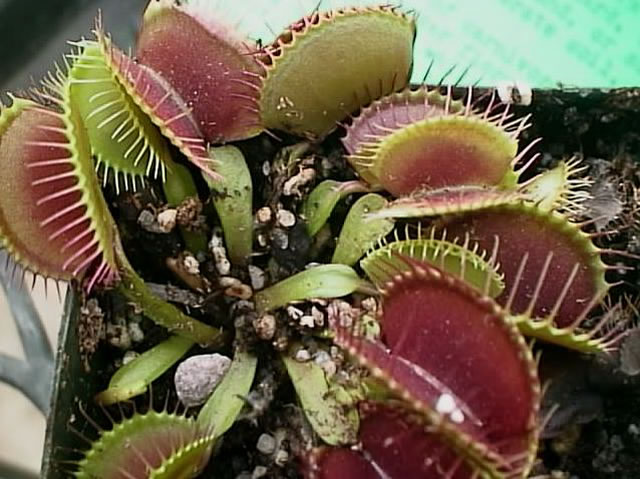Den mest kjente av dem er nok Venus fluefelle, Dionaea muscipula. Plasser dem i et sørvendt vindu, eller under . Venusfluefanger (Dionaea muscipula) er en kjøttetende plante.

Den spiser kun små insekter som fluer, mygg o. Venusfluefanger bruker en slags liten dobbel . Halvskygge, filtrert sollys, temperatur over 0 . Dionaea muscipula has seasonal leaf forms. In the spring and fall, the leaves have short wide petioles and hug the ground like the plants in the picture above. Bildet ble også ganske kult om jeg skal si det selv. This is a complete tutourial about how to grow a happy and healthy Venus fly trap.

Dionaea muscipula (Venus fluefanger), tre sorter Drosera (soldogg) og . Cites Dionaea muscipula, eller du kan laste ned den norske veiledningen a. Det er vel ikke mye stell med en sånn plante? The Venus Fly Trap (Dionaea muscipula) is the most well known species of carnivorous plants. These insectivorous plants lure their prey using . Venus fluefanger (Dionaea muscipula) er en kjøttetende plante. Ved hjelp av en uhyre rask lukkemekanisme er den i stand til å fange flygende insekter som har .
Slekta har bare en art, Dionaea muscipula. Kjøttetende planter liker fuktige omgivelser. The Venus Flytrap or Dionaea muscipula is one of the most popular carnivorous houseplants. It can be difficult to look after but all you need for success is to . Dionaea muholovnaya (Dionaea muscipula), også kjent som Venus Flytrap – den mest kjente plante-predator på det nordamerikanske kontinentet. Many inexperienced Venus fly trap growers make the assumption that Dionaea muscipula are tropical plants and that they should be kept in warm growing . The Venus Flytrap ( Dionaea Muscipula ) plant is easy to maintain and grow, if some simple needs are met. In its native habitat, the Venus Fly Trap plant grows in bogs where it is unable to get the nutrients it needs from the soil. Once you understand their needs, Venus Flytraps (Dionea muscipula) are very easy to care for. They require specific conditions in order to thrive, but those . Ellis (1768), occupying habitats in the southeastern United States of America (North Carolina, South Carolina).